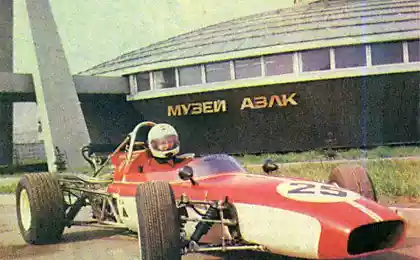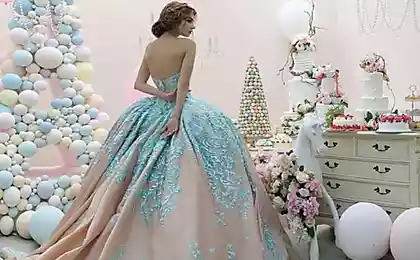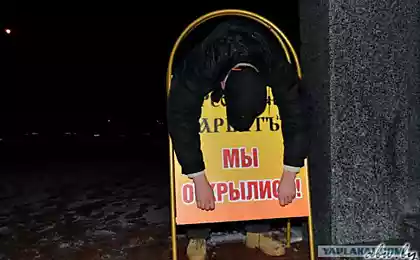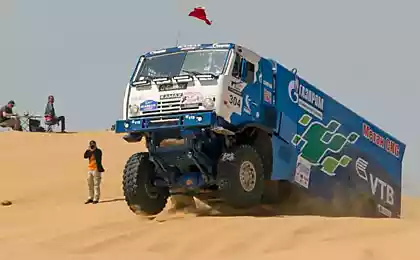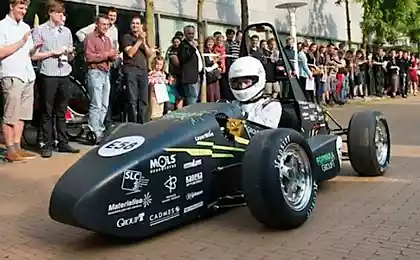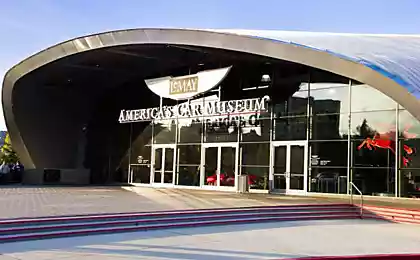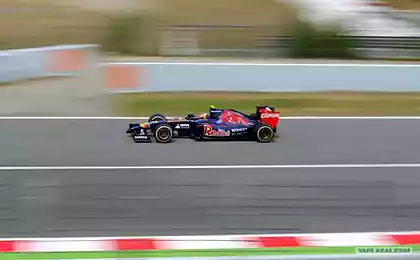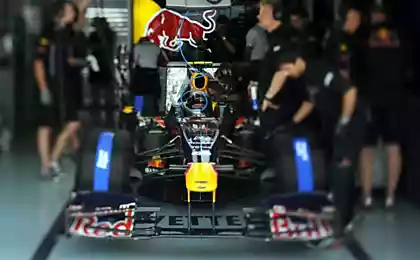523
How does the wheel of a racing car, "Formula 1"?
Racing cars "Formula 1" is without a doubt one of the most high-tech achievements. They are so complex as to require the driver maximum concentration. Being on the route and coming up with wheel-to-wheel with some world champion like Sebastian Vettel, you can't just take, to remove at least one hand off the wheel. In the best case you will lose the position in the worst — life, crashed on the nearest security fence for spectators. Each task you want to perform the rider, each of the information they need to know is literally at the tips of his fingers. After all, one of the most innovative things in the race car is the steering wheel, which at its core is literally the center of her nervous system.
Eighty million nine hundred thousand nine hundred fifty three
All this because race cars "Formulas-1" have many different parameters that can and should be set right during the race. And this is done by the driver. While telemetry continuously provides equipment status information of the car engineers and mechanics in the command bridge, the driver has full and sole control over the management of a range of different settings up to the level of the air-fuel mixture and the torque curve.
All of these indicators, the driver can change several times during the race, or even a single round. All settings are carried out in full control of the driver's hands the steering wheel and not tearing his eyes from the road. That's why every modern racing wheel of a race car "Formulas-1" is equipped with a set of 35 and even more different knobs, switches and buttons, not counting the small LCD screen, the use of which began recently. In addition, behind the wheel are two peas in a gear that the racer will use for one race almost 4000 times. There is also a third lobe that is responsible for grip.
If you go back to a LCD screen, for example, created by McLaren Electronics PCU-8D offers a 4.3-inch display with a resolution of 480 x 272 pixels. It shows about 100 different technical parameters about the current state of the car, including current speed, level of oil temperature to the ratio of the current speed and lap number of laps remaining. All these parameters can be configured by the driver or his engineer. This year teams are going to switch to a more modern and sophisticated technologies, but some, including Infiniti Red Bull Racing, decided that the best would be to use old and proven technology and a more simple display PCU-6D. At least for another season.
The photo above shows the racing wheel of the Sauber C33, to be installed in the cars Esteban gutiérrez and Adrian Sutil involved in this season "Formulas-1". Usually racing teams never talk about what technologies they use. However, "Zauber" has decided to share a chart that explains what are the functions of the buttons, and one or the other switch on their steering wheel.
Yellow N button: allows you to turn neutral from 1st or 2nd transmission;
Rotary switch BRKBAL (brake balance): adjusts balance front and rear braking system;
Button Black Box: according to the team mechanics that the rider goes to Pete;
Blue and orange buttons S1/S2: they can be programmed to perform various functions;
Switch Entry: allows the rider to make changes to the performance of the differential;
Orange button and green BRK-/BRK+: changes the balance of braking forces between programmed settings and current settings BRKBAL;
Switch IGN (ignition): responsible for managing the timings of ignition of the fuel mixture;
White button ACK: Responsible for approval made to the system changes;
Switch PREL: responsible for monitoring pre-load on the differential when shifting torque;
The red button Oil: pumping oil from the auxiliary tank into the main;
Black button BP (clutch torque): activates the search procedure of the clutch torque;
Button DRS (low resistance): adjusts the position of the rear wing in the DRS zones;
Button red PL (pit lane): activates the speed limiter in the pit lane (usually it is limited to 100 km/h);
Black button R: responsible for activating voice communication between driver and command bridge;
Switch SOC: controls the level of the state of charge of the ERS system, when the system consumes or generates energy;
Switch Pedal: changes the behavior of the gas pedal when it is pressed;
Switch Fuel: managing fuel consumption;
The black button OT: activates various preset settings for all systems, depending on when the driver attempts to defend their position on the track or tries to overtake an opponent;
Switch Tire: according to the Central control unit about which type of tyre a car is using at the moment;
Switches BBal-/BBal+: used for accurate calibration, a balanced ratio brake system;
MFRS (multi-function switch): allows the driver and engineers to control a different set of systems management functions which were not assigned to separate buttons. These include the operation of the engine (PERF), Rev limiter (ENG), the ratio of the air-fuel mixture (MIX), turbocharger (TURBO), corner exit differential (VISCO), the limit of recovery mode MGU-K (BRK), the limit acceleration, the MGU-K (BOOST), system (DASH), cruise control (CC, disabled when qualifying and the race), shift type (SHIFT), and the displacement of the clutch torque (CLU);
White button -10/+1: allow for quick navigation within the menu MFRS.
As you can see, the wheel made a huge range available to control driver settings. And this list still does not include set information that is displayed on the LCD screen. A lot of information — not always well, so each driver decides which information will be displayed on the screen and my steering wheel end up to use. However, as engineers say, the presence of the LCD screen gives the driver an advantage because he always knows what's going on with his car. Something that quite possibly saved the lives of Nico Rosberg when the telemetry system of his car failed before the race in China.
Without get from the car Rosberg of information, engineers had to ask the pilot for periodic self-assessment of level of fuel consumption, and other data. The driver of the team Mercedes AMG Petronas in the end, tired of the constant questions of his technical staff and he literally asked them to shut up, because they disturb him focus on the race and to do their job, which ultimately ended his second place finish when he crossed the line just behind his teammate Lewis Hamilton. published
P. S. And remember, only by changing their consumption — together we change the world! ©
Source: vk.com/wiki_inventions
The most environmentally friendly insulation: which one to choose?
Children no longer obey their parents, if you do not recognize good actions
